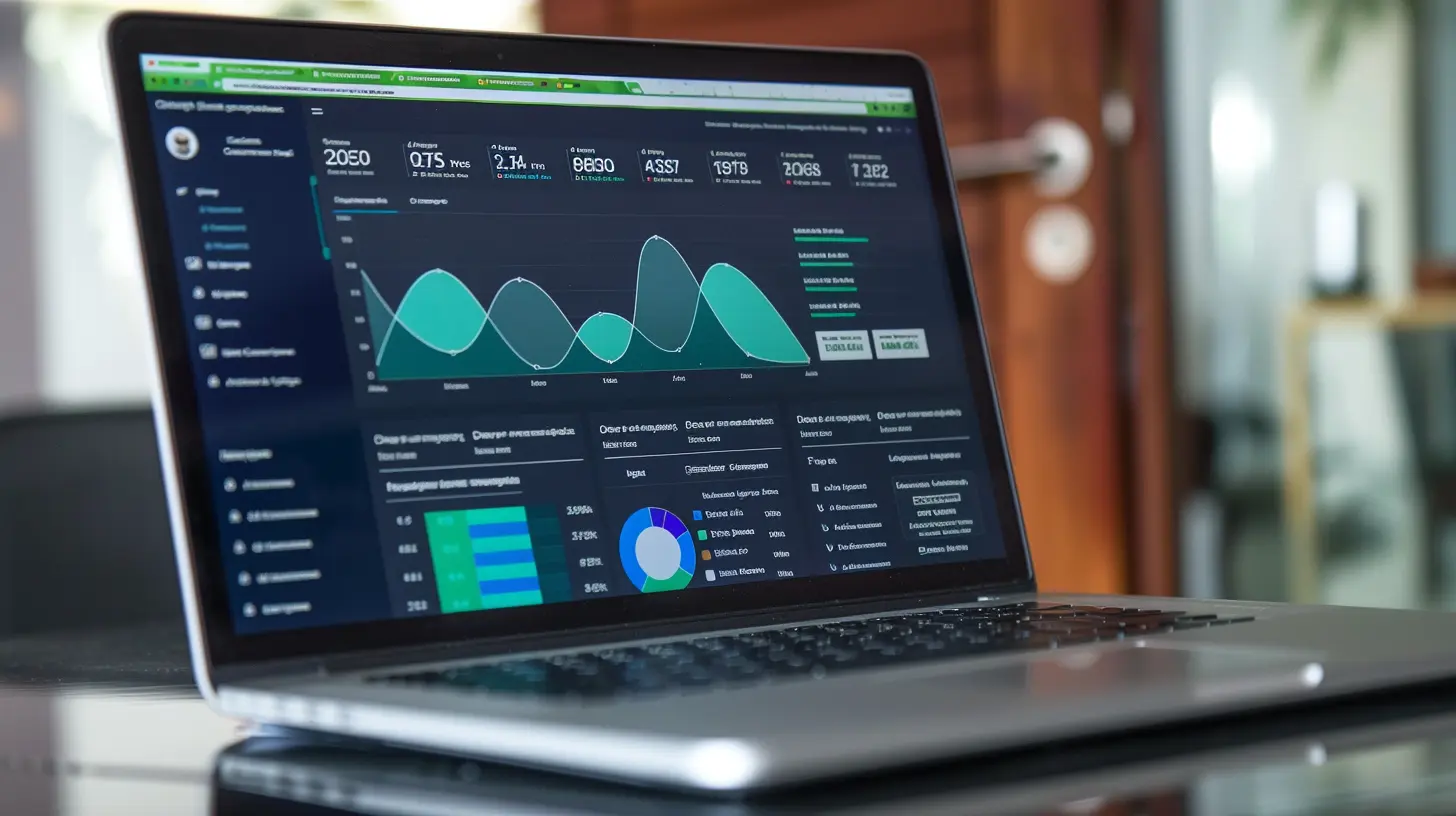How to Build a Data-Driven Growth Strategy for Your Business
24 March 2025
In today's hyper-competitive world, businesses that rely on gut feelings often get left behind. The key to sustainable success? A data-driven growth strategy. By leveraging data, you can make smarter decisions, optimize marketing efforts, and ultimately boost revenue.
But how exactly do you build a data-driven growth strategy that works? Let’s break it down step by step. 
Why a Data-Driven Growth Strategy Matters
Think of data as the GPS for your business. Would you go on a road trip without a map? Probably not. In the same way, making business decisions without data can lead to wasted resources, poor conversions, and missed opportunities.A data-driven approach allows you to:
- Make informed decisions instead of relying on guesswork.
- Improve efficiency by allocating resources where they generate the most impact.
- Enhance customer experience by personalizing strategies based on actual behavior.
- Identify new opportunities before your competitors do.
Now that you understand why it’s crucial, let’s dive into how you can build a robust data-driven growth strategy for your business. 
Step 1: Define Your Goals and Key Metrics
Before you can use data effectively, you need to define your business goals. What does success look like? Do you want to increase customer retention, boost sales, or improve engagement?Once your goals are set, outline the key metrics that will measure your progress. Each goal should have specific KPIs (Key Performance Indicators). Here are some examples:
- For customer acquisition: Cost per acquisition (CPA), lead conversion rate, website traffic sources.
- For customer retention: Customer lifetime value (CLV), churn rate, repeat purchase rate.
- For sales performance: Average order value (AOV), revenue growth, sales cycle length.
Without clear goals and metrics, your data is just a pile of numbers with no direction. 
Step 2: Collect the Right Data
Data is only useful if it’s accurate, relevant, and actionable. Focus on collecting data from multiple sources to get a complete picture of your business performance.Sources of Data You Should Track
- Website Analytics: Tools like Google Analytics and Hotjar give insights into user behavior, traffic sources, and engagement.- Sales Data: CRM platforms like HubSpot and Salesforce help track deals, customer interactions, and purchase patterns.
- Social Media Metrics: Engagement, reach, and conversion data from platforms like Facebook, Instagram, and LinkedIn.
- Customer Feedback & Surveys: Direct feedback from existing customers can highlight pain points and opportunities.
- Email Marketing Stats: Open rates, click-through rates, and conversion rates from email campaigns.
The key is not to collect every possible data point, but to focus on those that directly influence your goals. 
Step 3: Analyze and Interpret Data Correctly
Data without analysis is just noise. The real magic happens when you interpret data to extract meaningful insights.Here’s how you can make sense of the data you collect:
Segmentation:
Break down your data into specific groups based on:- Demographics (age, gender, location)
- Behavior (purchase history, content engagement, frequent visitors)
- Customer status (new vs. returning customers)
This segmentation allows you to tailor strategies for different audience segments, improving efficiency.
Identify Patterns and Trends:
Look at historical data to spot trends. Are there seasons where sales spike? Do certain marketing channels perform better than others? Recognizing patterns helps predict future outcomes.Compare Against Benchmarks:
Compare your data against industry benchmarks to see where you stand. If your email open rate is 10% but the industry average is 20%, it’s a clear sign you need to improve your email subject lines and targeting.Run A/B Testing:
Not sure which version of your marketing campaign will perform better? Run A/B tests to compare different headlines, CTAs, or product pricing models. This eliminates guesswork and lets the data guide your decisions.Step 4: Leverage Automation and AI
Manually analyzing data is time-consuming. That’s where automation and AI step in to streamline the process.AI-Powered Tools That Can Help:
- Google Analytics 4 (GA4): Advanced AI-driven insights for tracking website performance.- HubSpot & Salesforce: CRM tools that automate customer data collection and reporting.
- Chatbots & AI Assistants: Improve customer engagement and provide real-time assistance.
- AI-Based Marketing Tools: Platforms like ChatGPT, Jasper, and Hootsuite help automate content creation and social media management.
By incorporating automation, you can spend less time crunching numbers and more time making strategic decisions.
Step 5: Implement Data-Driven Marketing Strategies
Now that you have solid data insights, it’s time to apply them to grow your business.Personalized Marketing Campaigns
Customers hate generic marketing. Use data to personalize email campaigns, website content, and product recommendations based on user behavior.Example: If a customer frequently browses “men’s sneakers” but hasn’t purchased, send them a tailored discount on sneakers.
Optimize Your Sales Funnel
Track where potential customers are dropping off in your sales funnel. If website visitors are abandoning checkout, you may need to improve:- Faster Checkout Process (One-click checkout, multiple payment options)
- Trust Signals (Secure payment badges, customer testimonials)
- Retargeting Ads (Facebook or Google Ads reminding customers about their abandoned cart)
Improve Customer Retention with Data
Acquiring new customers is expensive. It’s smarter to nurture and retain existing ones.Use data to:
- Send personalized follow-ups after a purchase
- Offer rewards for repeat purchases
- Monitor churn indicators (reduced engagement, canceled subscriptions) and take proactive action
Step 6: Continuously Optimize and Adapt
A data-driven strategy is never set in stone. Markets shift, customer preferences evolve, and new technologies emerge. That’s why ongoing optimization is crucial.How to Keep Improving:
- Schedule regular data reviews (weekly, monthly, or quarterly).- Track competitor performance and adjust your strategies accordingly.
- Experiment with new trends like AI-driven marketing or influencer collaborations.
By regularly refining your approach, you can stay ahead of the competition and keep your growth engine running smoothly.
Common Mistakes to Avoid in a Data-Driven Strategy
Even with the best intentions, businesses often make mistakes when implementing a data-driven approach. Here are some to watch out for:🚨 Not setting clear goals – Without clear objectives, data collection becomes meaningless.
🚨 Ignoring qualitative data – Numbers are great, but customer reviews, surveys, and direct feedback offer valuable insights too.
🚨 Relying only on past data – Trends change. Don’t base future strategies solely on outdated data.
🚨 Overloading with unnecessary data – Focus on relevant metrics instead of drowning in irrelevant stats.
🚨 Failing to act on insights – Data is useless if you don’t take action based on your findings.
Final Thoughts
Building a data-driven growth strategy isn’t just for big corporations—it’s for any business that wants to make smarter decisions, optimize resources, and scale efficiently.By setting clear goals, collecting relevant data, analyzing insights, leveraging automation, and continuously optimizing, you can turn data into a powerful tool for business growth.
At the end of the day, data is only valuable if you use it effectively. So, don’t just collect numbers—turn them into action!
all images in this post were generated using AI tools
Category:
Business GrowthAuthor:

Caden Robinson
Discussion
rate this article
7 comments
Emily Frye
A data-driven growth strategy empowers businesses to make informed decisions, optimize resources, and anticipate market shifts. Embrace analytics as a core component, fostering a culture of continuous learning to drive sustainable success and innovation.
April 7, 2025 at 10:22 AM

Caden Robinson
Thank you for your insightful comment! Emphasizing analytics and fostering a learning culture are indeed crucial for leveraging data-driven strategies effectively.
Noah McKinstry
This article highlights essential steps to create a data-driven growth strategy, emphasizing the importance of analytics in decision-making. By leveraging data insights, businesses can identify opportunities, optimize operations, and drive sustainable growth. A valuable read for any organization looking to innovate and expand.
April 2, 2025 at 6:25 PM

Caden Robinson
Thank you! I'm glad you found the article valuable. Embracing data-driven strategies is crucial for innovation and sustainable growth.
Noelle Hudson
Data empowers strategic decisions.
March 31, 2025 at 6:25 PM

Caden Robinson
Absolutely! Leveraging data enables informed decision-making, driving targeted growth and optimizing resources effectively.
Raina Klein
Thank you for sharing these insightful tips on building a data-driven growth strategy! Your practical advice is invaluable for businesses looking to harness the power of data for sustainable growth. Excited to implement these ideas!
March 29, 2025 at 7:20 PM

Caden Robinson
Thank you for your kind words! I'm glad you found the tips helpful and wish you success in implementing them.
Michelle Fields
Great insights! Emphasizing data-driven strategies is essential for sustainable growth. Implementing these tips can truly transform business decision-making and drive success.
March 28, 2025 at 1:59 PM

Caden Robinson
Thank you! I'm glad you found the insights valuable. Embracing data-driven strategies is indeed crucial for achieving sustainable growth.
Porter Roth
Data-driven growth: where numbers meet fun and profits soar!
March 27, 2025 at 11:56 AM

Caden Robinson
Absolutely! Embracing a data-driven growth strategy not only enhances decision-making but also adds an element of excitement as you see profits thrive through informed insights.
Rhiannon Rodriguez
This article piques my curiosity! How can businesses effectively balance qualitative insights with quantitative data in their growth strategies? I’m eager to learn more about practical applications and real-world examples.
March 24, 2025 at 1:59 PM

Caden Robinson
Thank you for your interest! Businesses can effectively balance qualitative insights with quantitative data by integrating customer feedback into data analysis, using surveys and interviews alongside metrics. Practical applications include A/B testing and user journey mapping to inform decisions. Real-world examples can be found in companies like Airbnb and Spotify, which leverage both data types to enhance user experience and drive growth.
MORE POSTS

How Social Commerce is Reshaping Consumer Behavior

How to Fine-Tune Your Strategic Plan for Maximum Efficiency

How Voice Technology is Changing Consumer Interaction

How to Turn Negotiation Failures into Future Wins

How to Effectively Communicate Risk to Your Stakeholders

Crafting a Hiring Strategy for Niche and Specialized Roles